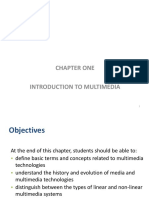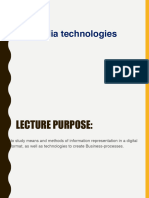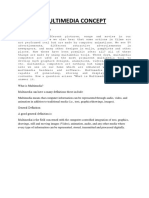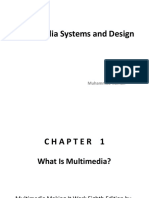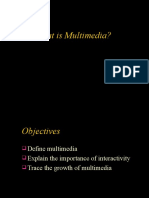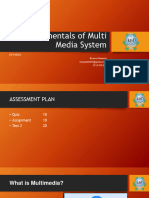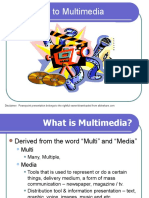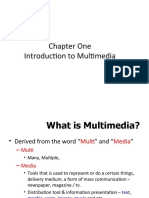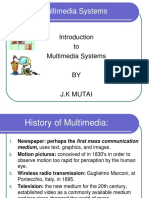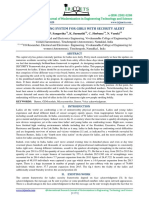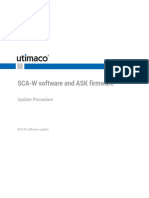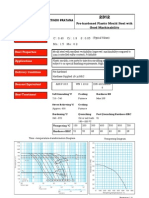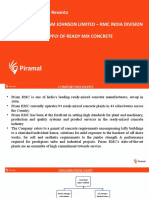0% found this document useful (0 votes)
34 views14 pagesChapter-1 - Introduction To Multimedia
The document provides a comprehensive overview of multimedia, defining it as the integration of various media types under computer control for interactive use. It discusses the importance, applications, and benefits of multimedia across different fields such as business, education, and entertainment, as well as the characteristics and challenges of multimedia systems. Additionally, it outlines the components and phases involved in multimedia production.
Uploaded by
aalwabel2Copyright
© © All Rights Reserved
We take content rights seriously. If you suspect this is your content, claim it here.
Available Formats
Download as DOC, PDF, TXT or read online on Scribd
0% found this document useful (0 votes)
34 views14 pagesChapter-1 - Introduction To Multimedia
The document provides a comprehensive overview of multimedia, defining it as the integration of various media types under computer control for interactive use. It discusses the importance, applications, and benefits of multimedia across different fields such as business, education, and entertainment, as well as the characteristics and challenges of multimedia systems. Additionally, it outlines the components and phases involved in multimedia production.
Uploaded by
aalwabel2Copyright
© © All Rights Reserved
We take content rights seriously. If you suspect this is your content, claim it here.
Available Formats
Download as DOC, PDF, TXT or read online on Scribd
/ 14










